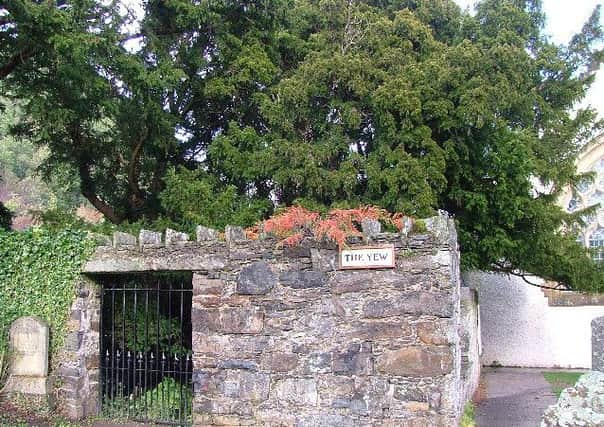Mystery of the '˜5,000-year-old' yew of Fortingall


Believed to be between 2,000 and 5,000 years-old, the yew, at Glen Lyon in Perthshire, is shrouded in legend and mystery.
One popular story suggests the tree is the birthplace of Pontius Pilate, who ordered the crucifixion of Jesus and became a Roman governor under the emperor of Tiberius in AD26.
Advertisement
Hide AdAdvertisement
Hide AdThe Scottish origins of Pilate are far from clear but it is said he was born after envoys arrived from Rome to strike up diplomatic relations with Caledonian tribal leaders.
At the time, Metellanus, the 17th King of Scotland, held Dun Geal, or White Fort, in Glen Lyon with claims a member of the Roman delegation fathered a child with a Caledonian woman during the visit.
Others claim Pilate was not born under the tree but instead played there as a child. Others claim he was born in southern Italy and that his father was in Fortingall when he received news of the arrival of his son.
The yew was held sacred by the Druids in pre-Christian times and regarded for their qualities of longevity and regeneration.
Churchyards were often build near established yews which were considered to signify a sacred space.
In Celtic culture, the tree came to symbolise death and resurrection with the needles of the tree feared as highly toxic.
“Slips of yew” were boiled up by the three witches in Macbeth, along with gall of goat, with the poisonous brew lit by the moon’s eclipse.
Advertisement
Hide AdAdvertisement
Hide AdAccording to a Handbook of Scotland’s Trees by Fi Martynoga, the yew also holds an important place in the tradition of the clans.
Martynoga said: “In Scottish tradition, it is claimed that a clan chieftain, while holding a branch of yew in this left hand, could openly insult an enemy so that only those around him could hear, while his unfortunate adversary was none the wiser about the abuse.”
Members of Clan Fraser still wear a sprig of yew in their bonnets.
At Fortingall, botanists were “quite surprised” to find the ancient yew starting to change sex when berries were suddenly found to be sprouting on its branches - something only a female would do - last year.
Scotland is home to a number of ancient yews, may which are more than 1,000 years old.
Determining the true age of a yew is notoriously difficult given that growth rates are very slow and inconsistent.
A girth measurement in 1769 suggested the Fortingall Yew could be up to 5,000 years old, although more recent estimates suggest between 2,000 and 3,000 years.
